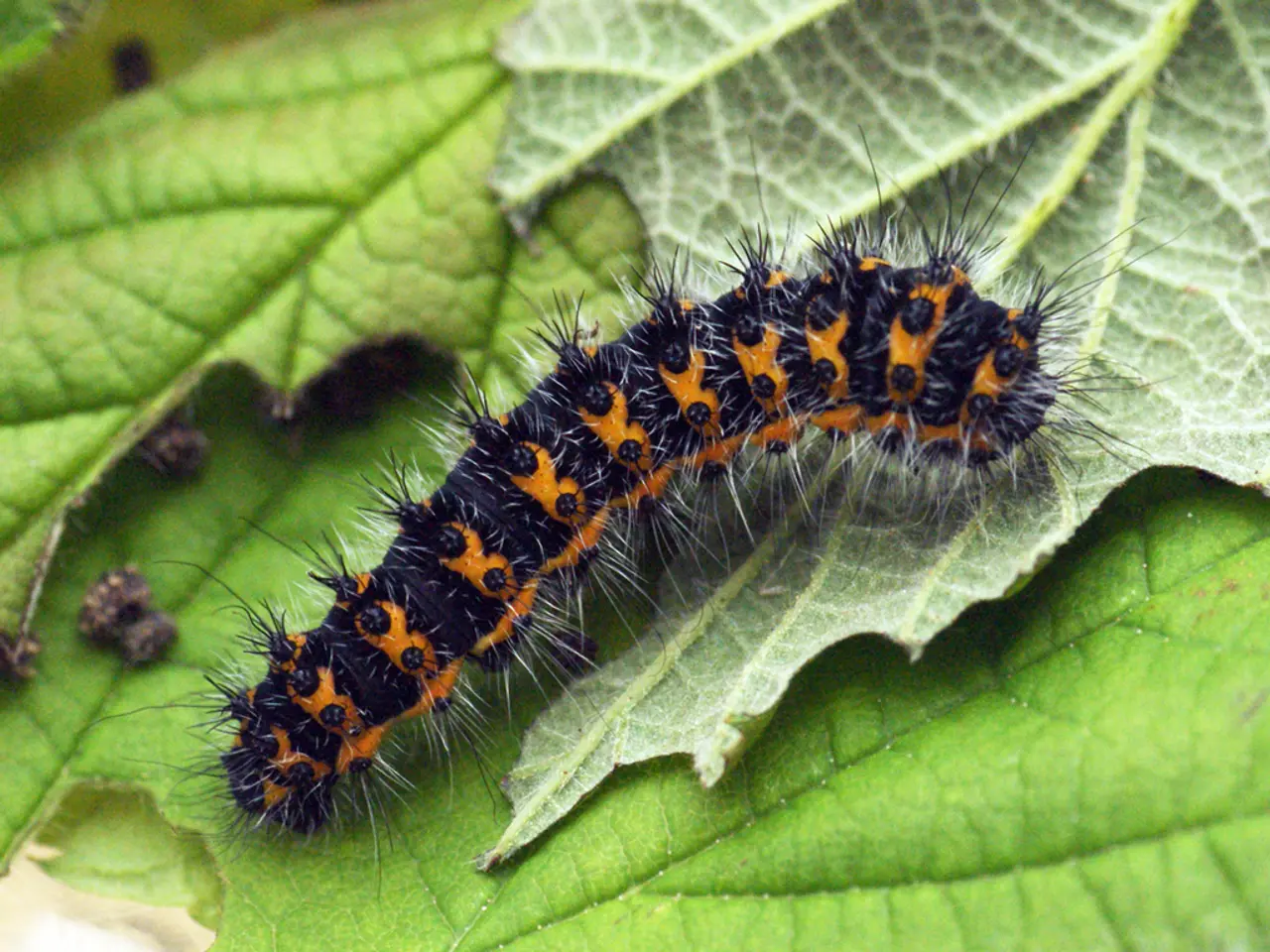Discover the Sound-Mimicking Walnut Sphinx Caterpillar
The Walnut Sphinx caterpillar, a vibrant green creature with a distinctive horn on its posterior, is a fascinating find in the deciduous woods of eastern North America. This unique insect is known for its surprising defense mechanism - a twittering sound that resembles a chickadee tweet.
This sound, produced when the caterpillar is startled, is a clever adaptation to deter predators. When predatory birds hear this sound, they are startled and fly quickly to cover, providing the caterpillar with a precious moment to escape. The sound production involves specialized spiracles on the eighth segment, which contract forcefully, expelling air and creating the distinctive twitter.
The Walnut Sphinx caterpillar is quite large, measuring 4-5 inches (10-15 cm) in length. Its body is adorned with tiny, white granules, adding to its unique appearance. When touched, the caterpillar responds by violently thrashing about.
Adult Walnut Sphinx moths, with a wingspan of about 2.5 inches (6 cm), are active in cool regions from July to October. In warmer zones, they may have up to three generations. These moths are attracted to wild nut trees like walnut, butternut, and hazelnut. However, unlike the caterpillar, adult moths are interested only in procreation and do not eat.
The Walnut Sphinx caterpillar feeds on the leaves of nut trees, beeches, hornbeam, and alder. After maturing, it spins a cocoon and transforms into a pupa, where it remains until it is ready to emerge as a moth. Some species of butterfly pupae, including brush-footed and swallowtail, also make a twittering sound.
The sound production mechanism in some butterfly pupae involves special plates that rub together. However, in the Walnut Sphinx caterpillar, the sound is created by the contraction of the frontal segments, forcing air from the spiracles on the eighth segment. This unique method of sound production may be an adaptation to deter predators, adding another layer of defense for this fascinating creature.
Read also:
- Jaguar Swimming Distance Breaks Species Record, Puzzles Researchers
- Top 10 Austin-Based Advertising Firms Worth Exploring
- Comprehensive Guide to Electric Vehicle Infotainment: Nearly all key aspects covered regarding in-vehicle entertainment systems for electric vehicles
- Simplify essential thrifty practices from yesteryears to reintroduce in 2024




